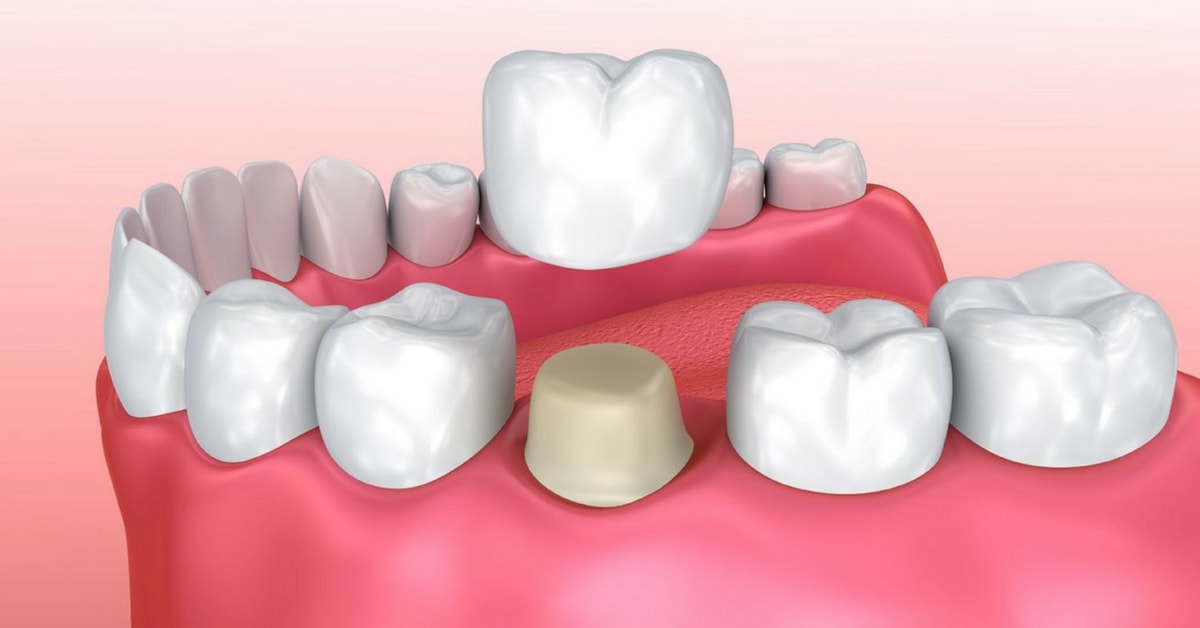
If your crown falls off, it’s essential to act quickly to protect your tooth and prevent further complications. Here’s a step-by-step guide:
1. Retrieve the Crown
Carefully locate and retrieve the crown if possible. Rinse it with warm water to remove any debris, but be cautious not to drop it down the sink.
2. Inspect the Crown and Tooth
Check the crown and the tooth it covered. Look for any visible signs of damage, such as cracks, decay, or missing pieces.
3. Protect the Tooth
The exposed tooth underneath the crown is likely to be sensitive to temperature, pressure, and bacteria. Cover the tooth with dental wax, gauze, or even sugar-free gum if you’re unable to see a dentist immediately.
4. Avoid Certain Foods and Drinks
Stay away from hard, sticky, or sugary foods that could irritate or damage the exposed tooth. Avoid extremely hot or cold beverages as well.
5. Contact Your Dentist
Call your dentist as soon as possible to schedule an appointment. Let them know the crown has fallen off and describe any pain or discomfort you’re experiencing.
Temporary Fixes You Can Try
While waiting for your dental appointment, you can try some temporary solutions to protect the tooth and minimize discomfort:
1. Over-the-Counter Dental Cement
You can find temporary dental cement at most pharmacies. Apply a small amount to the inside of the crown and gently place it back over the tooth. Avoid biting down until the cement has set.
2. Denture Adhesive
Denture adhesive can also be used as a temporary measure to hold the crown in place. It’s not as strong as dental cement but can provide some protection.
3. Pain Relief
If the exposed tooth is causing pain, over-the-counter pain relievers like ibuprofen or acetaminophen can help manage discomfort.
What to Expect During Your Dental Appointment
When you visit your dentist after a crown falls off, they will assess the situation and determine the best course of action. Here’s what might happen:
1. Examination
The dentist will examine the tooth and the crown to check for damage, decay, or infection.
2. Cleaning the Tooth
If decay or debris is present, the dentist will clean the tooth to prepare it for reattachment.
3. Reattaching the Crown
If the crown and tooth are in good condition, the dentist will clean the crown and use fresh dental cement to secure it back in place.
4. Creating a New Crown
If the crown is damaged or doesn’t fit properly, the dentist may take impressions to create a new crown. In this case, a temporary crown may be placed while the new one is being made.
5. Treating Underlying Issues
If the underlying tooth is decayed or damaged, additional treatment such as a filling or root canal may be necessary before a new crown is placed.
Preventing Future Issues with Your Crown
To reduce the risk of your crown falling off again, follow these preventive measures:
1. Maintain Good Oral Hygiene
Brush and floss regularly to keep the area around the crown clean and free from decay.
2. Avoid Hard or Sticky Foods
Refrain from chewing hard candies, ice, or sticky foods like caramel that can dislodge a crown.
3. Use a Mouthguard
If you grind your teeth at night, wear a mouthguard to protect your crown and other teeth from excessive pressure.
4. Visit Your Dentist Regularly
Routine dental checkups allow your dentist to monitor the condition of your crown and address any potential issues early.
Common Questions About Tooth Crowns
1. Is Losing a Crown an Emergency?
While not always an emergency, a lost crown should be addressed promptly to protect the exposed tooth and prevent further damage.
2. Can I Eat Without a Crown?
Eating without a crown can be risky, as the exposed tooth is vulnerable to damage and decay. Stick to soft, non-sticky foods until you see your dentist.
3. How Long Does a Crown Last?
With proper care, most crowns last 5–15 years. The lifespan depends on factors such as material, oral hygiene, and eating habits.
4. Can a Crown Be Reused?
If the crown is in good condition and fits properly, it can often be reused. Your dentist will determine if this is feasible.
Conclusion
If your tooth crown falls off, it’s essential to act quickly to protect the exposed tooth and prevent complications. Retrieve the crown, inspect the tooth, and take steps to minimize discomfort until you can see a dentist. While temporary fixes can provide short-term relief, professional dental care is necessary to address the underlying issue and ensure the long-term health of your tooth.
By following your dentist’s recommendations and maintaining good oral hygiene, you can extend the lifespan of your crown and avoid similar issues in the future. Dental crowns are a valuable tool in restorative dentistry, and with proper care, they can help you maintain a healthy, functional smile for years to come.
